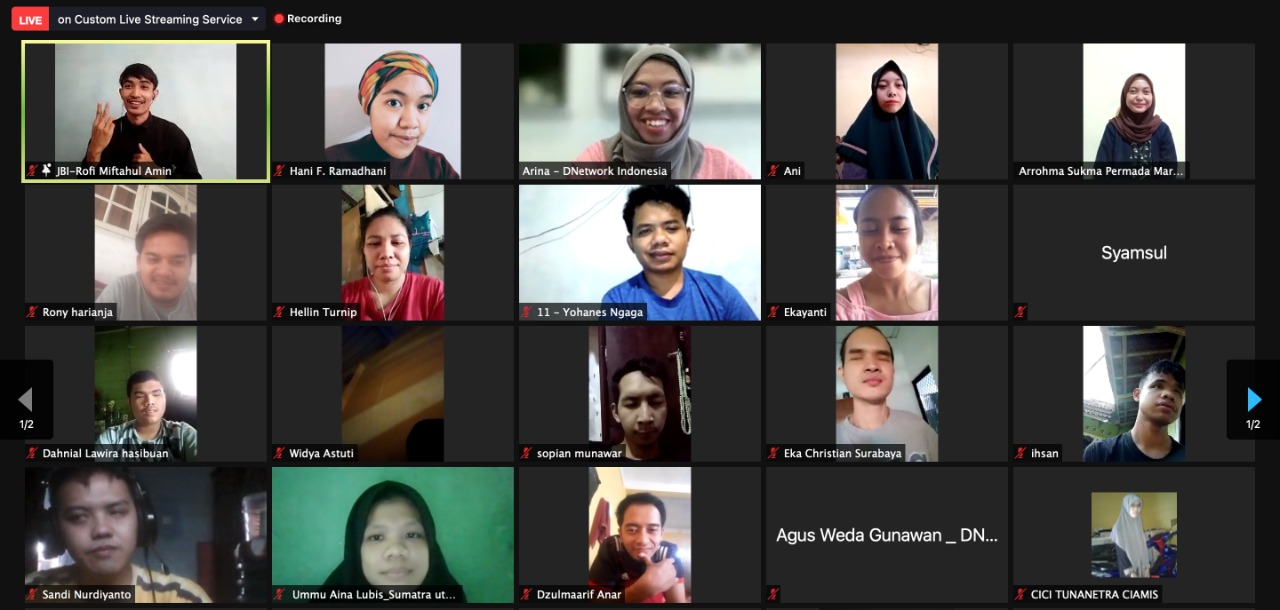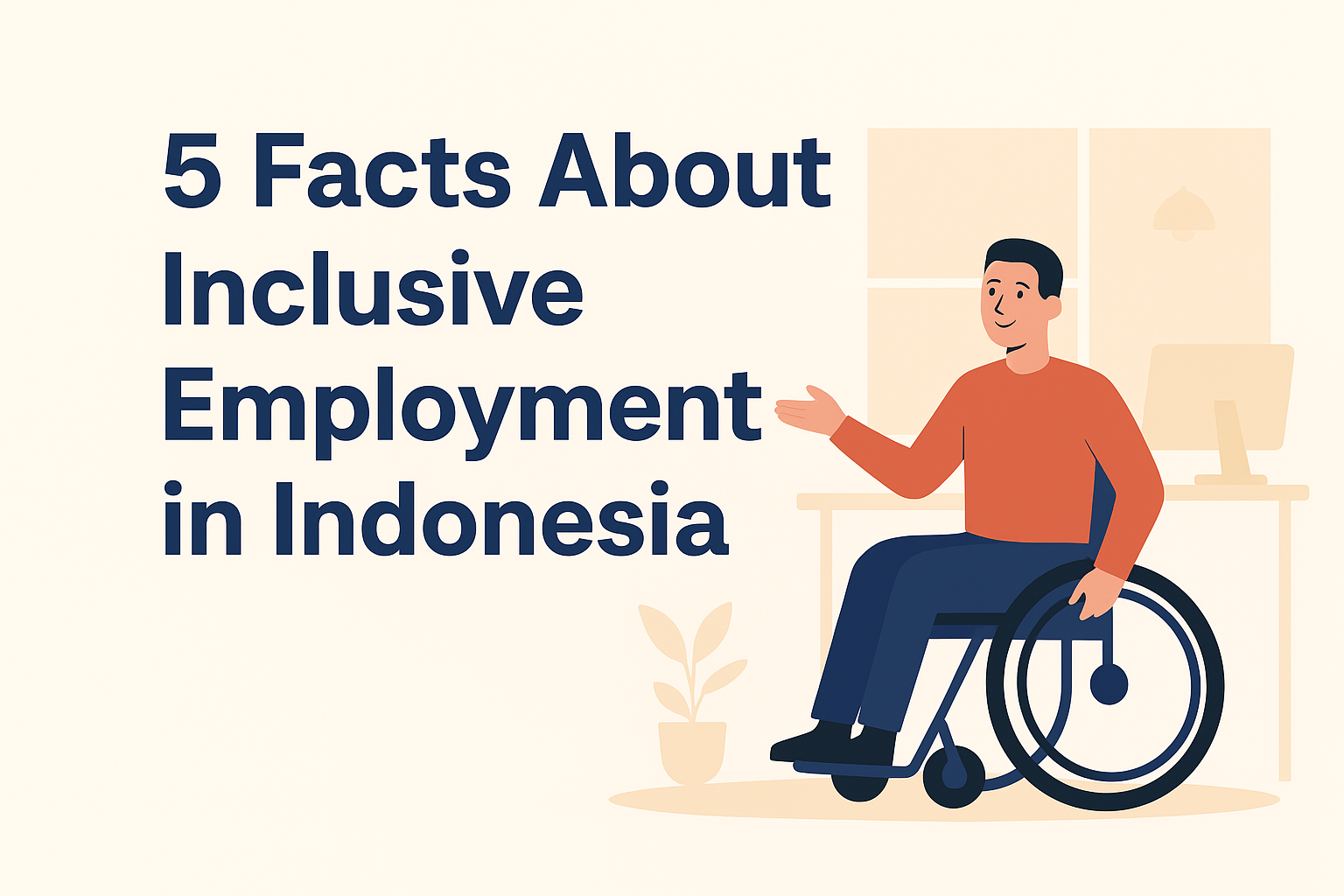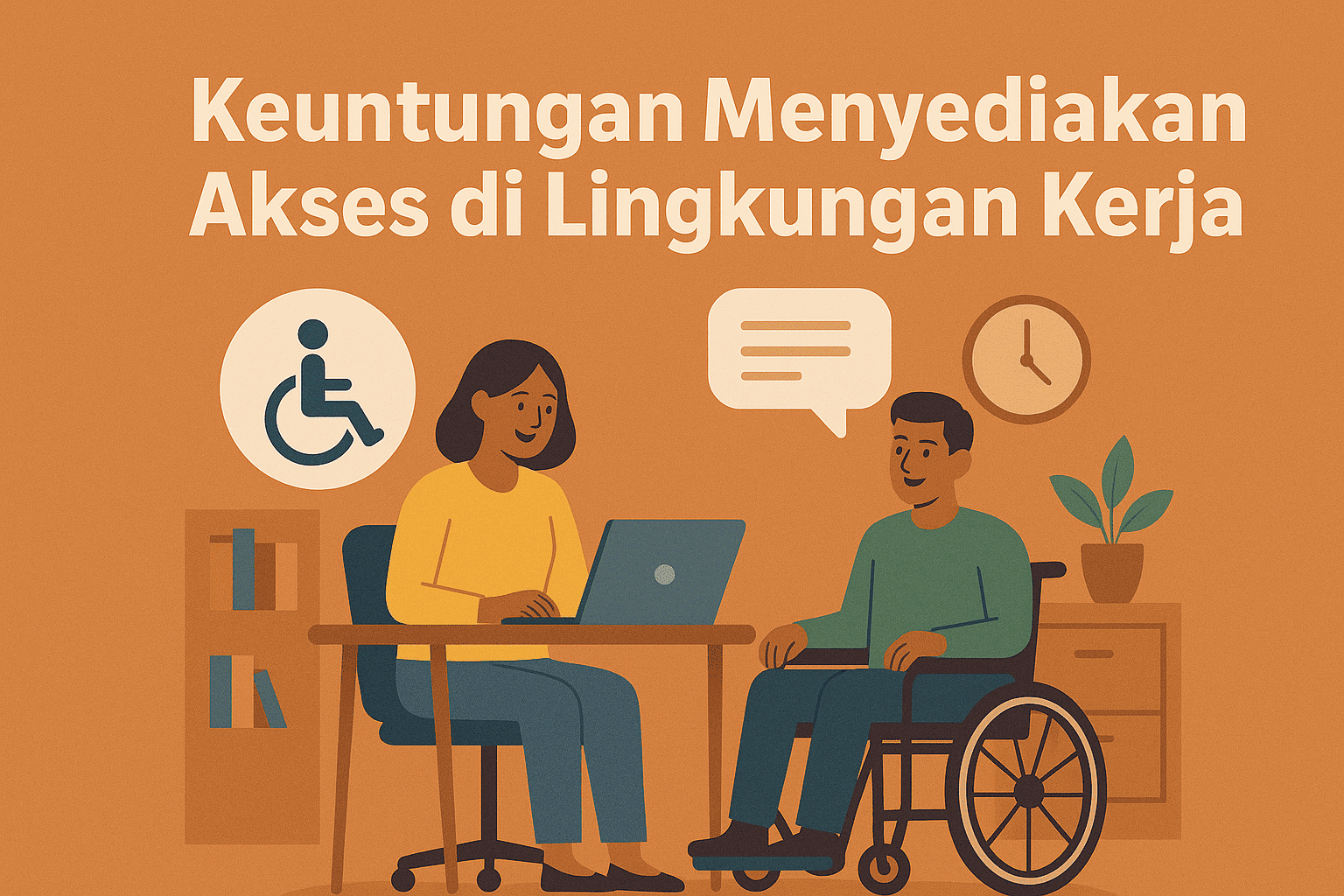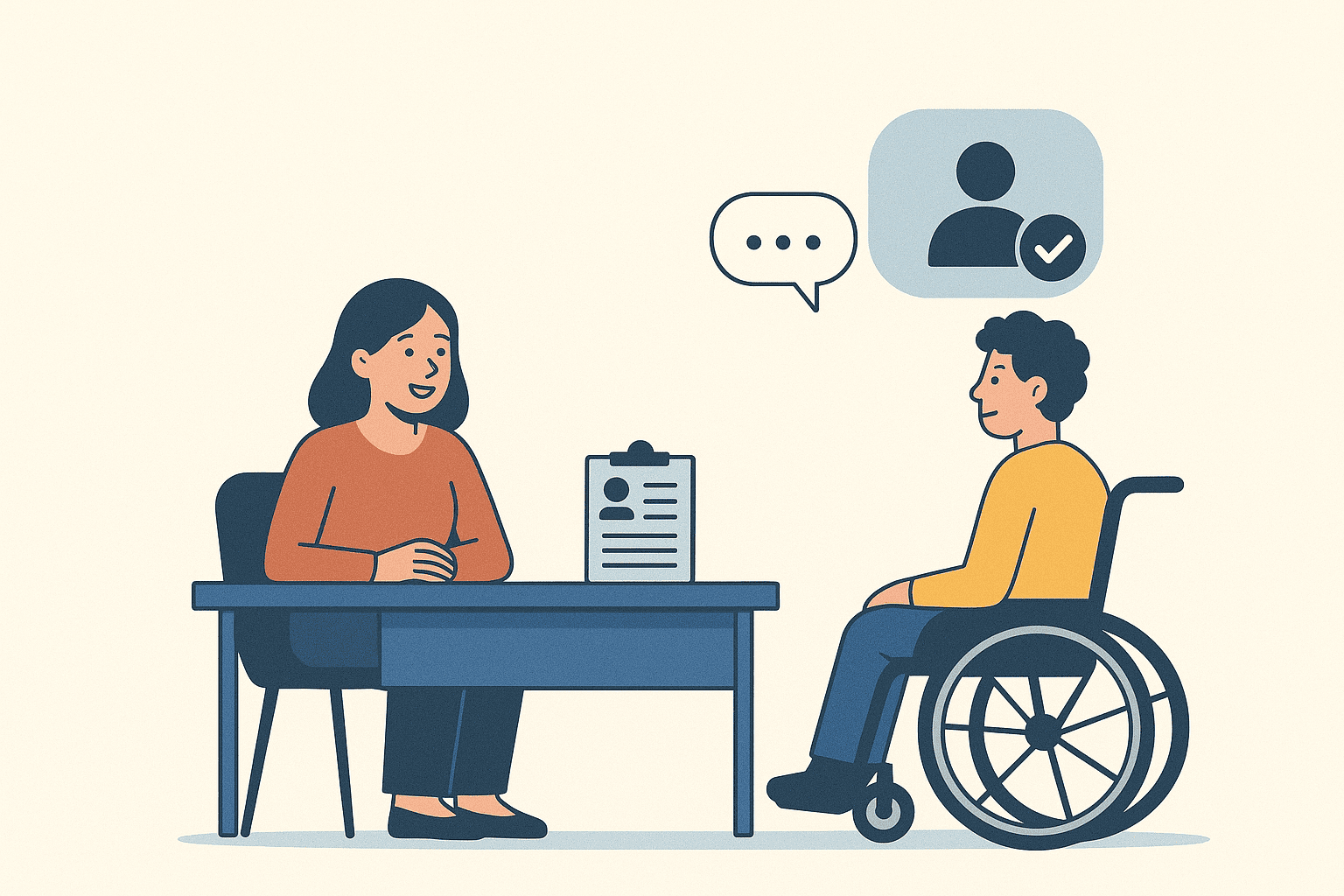Hai Sobat DNetwork!
Yuk, Cek! Apakah Rekrutmen di Tempatmu Sudah Bebas dari Diskriminasi terhadap Penyandang Disabilitas?
Inklusi kini jadi topik hangat di dunia kerja. Banyak perusahaan sudah mulai membuka peluang bagi penyandang disabilitas. Tapi… sudahkah proses rekrutmen yang kita lakukan benar-benar inklusif dan adil?
Tanpa disadari, ada praktik-praktik yang ternyata masih menyulitkan bahkan mendiskriminasi pelamar kerja penyandang disabilitas.
Semoga hal tersebut tidak terjadi di Perusahaan sobat. Melalui Artikel ini –kita akan sharing khususnya kepada sobat yang bekerja di bidang SDM, rekrutmen, atau manajemen perusahaan agar lebih memahami bentuk-bentuk diskriminasi yang sering terjadi, sekaligus bagaimana cara memperbaikinya.
Lalu apa saja distriminatif yang sering terjadi?
1. Informasi Lowongan Tidak Aksesibel
Ketika mengakses konten lowongan, Penyandang disabilitas sering kesulitan mengakses informasi lowongan tersebut karena kontennya tidak dirancang untuk semua orang.
Misalnya:
- Teks hanya berupa gambar yang tidak bisa dibaca oleh pembaca layar
- Tidak ada subtitle atau transkrip untuk video lowongan
- Situs rekrutmen sulit diakses oleh pengguna alat bantu mobilitas atau pengguna keyboard saja
Akibatnya, banyak calon kandidat tidak bisa mengakses informasi dasar tentang pekerjaan yang mereka minati.
- Solusi yang dapat sobat lakukan:
Pastikan format konten bisa diakses oleh Penyandang Disabilitas dengan teknologi bantu yang mereka gunakan
- Gunakan bahasa yang jelas dan tidak bertele-tele
- Sediakan deskripsi alternatif untuk gambar dan teks transkrip untuk video/audio
- Yang paling penting sobat bisa diskusikan dengan Penyandang Disabilitas dan mencobakan konten lowongan yang akan di share untuk memastikan informasi tersebut bisa diakses
2. Lowongan Hanya Terbuka untuk Disabilitas Tertentu
Kadang ada konten lowongan yang menyertakan Kalimat seperti “hanya untuk disabilitas Fisik ringan” atau “tidak menerima pelamar Tuli” adalah bentuk eksklusi yang bisa menutup peluang orang-orang yang sebenarnya mampu dan cocok dengan posisi tersebut.
Setiap individu memiliki kombinasi kemampuan unik. Jenis disabilitas tidak otomatis menentukan apakah seseorang mampu atau tidak menjalankan pekerjaan tertentu.
Solusi:
- Fokus pada tugas dan tanggung jawab pekerjaan, bukan pada batasan jenis disabilitas
- Gunakan kalimat seperti: “Terbuka untuk semua pelamar, termasuk penyandang disabilitas. Akomodasi akan disediakan jika diperlukan.”
- Kita bisa Diskusi dengan Penyandang Disabilitas atau Komunitas Disabilitas untuk lis skill dan pekerjaan yang bisa dilakukan oleh setiap ragam Disabilitas
3. Menyortir Kandidat Berdasarkan Tingkat Disabilitas (Sebelum Wawancara)
Kadang ada proses seleksi menyortir kandidat hanya dari informasi disabilitas di CV atau form aplikasi. Misalnya, kandidat dianggap "tidak layak" hanya karena menggunakan kursi roda, memiliki hambatan pendengaran, atau hambatan bicara, tanpa melihat keahlian dan pengalaman kerjanya.
Ini bentuk diskriminasi berdasarkan asumsi, bukan penilaian objektif.
Solusi:
- Nilai pelamar berdasarkan kompetensi dan pengalaman kerja
- Wawancarai terlebih dahulu sebelum menarik kesimpulan
- Berikan tes keterampilan untuk mengukur kemampuan, bukan sekadar melihat kondisi
4. Tidak Memberikan Kesempatan untuk Diskusi Akomodasi
Kadang tidak terfikir untuk membuka ruang dialog soal kebutuhan akomodasi. Sering kali asumsi langsung menganggap proses rekrutmen “sulit” bila pelamar menyandang disabilitas. Padahal banyak penyandang disabilitas tahu persis apa yang mereka butuhkan, dan solusinya seringkali sederhana!
Contoh: Teman Tuli mungkin hanya butuh media tulisan saat wawancara. Atau seseorang dengan disabilitas Fisik mungkin hanya butuh ruangan yang bisa diakses kursi roda.
Solusi:
- Tanyakan sejak awal: “Apakah ada dukungan atau penyesuaian yang kami bisa sediakan?”
- Libatkan pelamar dalam percakapan terkait kebutuhan mereka
- Jadikan akomodasi sebagai bagian dari proses, bukan pengecualian
5. Memberikan Alasan Penolakan karena Disabilitas
Saat ini Masih banyak pelamar Disabilitas yang mendapat penolakan dengan alasan seperti:
"Karena kondisi disabilitas Anda, kami tidak dapat melanjutkan proses."
Ini bentuk diskriminasi eksplisit yang tidak dibenarkan dan bertentangan dengan prinsip kesetaraan.
Penolakan seharusnya berdasarkan hasil tes atau kecocokan kompetensi, bukan kondisi pribadi.
Solusi:
- Berikan alasan objektif jika pelamar tidak lolos
- Hindari menyebut disabilitas sebagai penyebab utama penolakan
- Gunakan bahasa yang sopan dan membangun
Lalu, Apa yang Bisa Dilakukan Perusahaan Mulai dari Sekarang?
- Audit ulang proses rekrutmen: dari konten, format, hingga cara komunikasi
- Latih tim HR tentang inklusi dan bias tidak sadar (unconscious bias.
- Pastikan semua kandidat bisa mengakses informasi dan proses seleksi
- Bangun budaya kerja yang mendukung keberagaman dan keterbukaan
- Libatkan penyandang disabilitas dalam merancang proses yang lebih adil
Yuk, pastikan proses rekrutmen yang kamu jalankan tidak menutup peluang siapa pun hanya karena mereka berbeda.
Karena dunia kerja yang sehat dan kuat dibangun oleh keberagaman kemampuan, perspektif, dan latar belakang.
Agar Rekrutmen di Prusahaan sobat inklusi, yuk bergabung bersama DNetwork untuk mengikuti program edukasi kami.





























